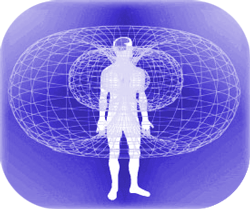If an apple pops into our field of vision, photons of light enter our eye and hit the back of the retina where light-sensitive rods and cones are stimulated and send a cascade of action potentials to the primary visual cortex. Action potentials are converted from electrical energy to chemical energy when passing from neuron to neuron over the synaptic cleft. An image is formed in our cortex of a red apple on a table, but other information is being processed as well, such as the mealy texture of the apple indicating it is somewhat rotten. Stimuli from touch receptors, taste receptors, and visual receptors are all amalgamated to allow you to resolve that you are looking at an unappetizing apple. But how were all of those interpretations of stimuli, traveling along separate cortical systems combined?
What is consciousness? Some would describe it as a state of being aware of one’s existence, the passing of time, and processing of thoughts. René Descartes, the 17th century French mathematician and philosopher believed there was dualist explanation for the existence of consciousness – that the consciousness was bound in the immaterial mind, separate from the body. The definition of mind according to Descartes can be almost synonymous with Plato’s “soul”. Descartes posits that the mind/consciousness/free will drives our body to complete voluntary acts such as raise our hand when we have our question. However, we can think of the body in control when involuntary acts are taking place such as the heart beating. Of course this is one of the questions that has always tickled man’s mind, but where does the consciousness reside outside of our body, or within?
From neurophysiological perspective, some neuroscientists believe that “consciousness”, or the integration of the information processing does not happen within cortices, but surrounding the brain in the form of a electromagnetic field. Remember, that there are millions of electrical currents and depolarizations occurring at any given moment within our brains. These currents create electric magnetic fields that amass create an a total electrical field that some neuroscientists have labelled as our “consciousness”. This holistic view of sensory input was a concept origninating from gestalt psychologists like Wolfgang Köhler who studied with the physicist Max Planck and derived the “Cemi field Theory”. The Cemi field theory also states that this endogenous EM field can influence our own neural pathways and shape our thoughts and learning.
The Cemi field theory is not without critics though for its relatively radical propositions and ideas surrounding one of man’s greatest mysteries. One of the questions that constantly arises is, if consciousness is dependent on an endogenous electrical field, why can’t a powerful exogenous electrical field such as electrical cables, shape our thoughts and neural functions? This question seems logically based, but according to neurophysiologists Johnjoe McFadden and Susan Pockett, our skull and cerebral spinal fluid negate the effects of external magnetic fields. Implications for this theory may extend into artificial intelligence research as well. Rather than try to encode abstract concepts such as creativity into a robot’s brain, a computer scientist could approach the problem by generating a fluctuating electromagnetic field similar to a humans. While the Cemi field theory may not answer all the problems classical neuroscientist have today, combining some of the current work conducted by the neurophysiologists may be helpful to further understanding the binding dilemma of sensory information.
For your entertainment:
Works consulted
Jones, MW. Electromagnetic-Field Theories of Mind. Journal of Consciousness Studies 20(11-12). http://philpapers.org/archive/JONETO.pdf
UniSci. Our Conscious Mind Could Be An Electromagnetic Field. Daily university science news. 2002. http://unisci.com/stories/20022/0516026.htm
Hatfield, Gary, “René Descartes”, The Stanford Encyclopedia of Philosophy (Spring 2015 Edition), Edward N. Zalta (ed.), URL = <http://plato.stanford.edu/archives/spr2015/entries/descartes/>.
Skirry Justin, “René Descartes”, Internet Encyclopedia of Philosophy, A Peer-Reviewed Academic Resource. http://www.iep.utm.edu/descarte/#SH7b
McFadden, J. Conscious Electromagnetic Field Theory. NeuroQuantology 5 (3)262-270.
